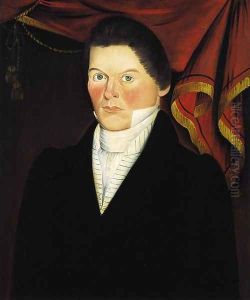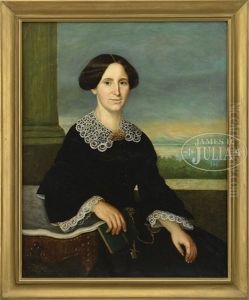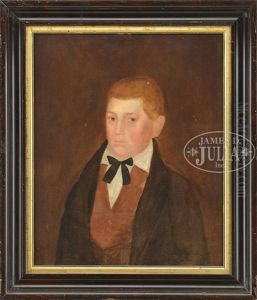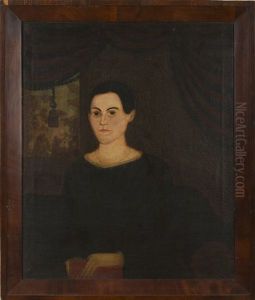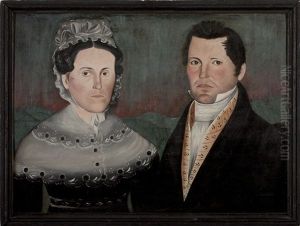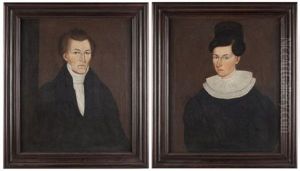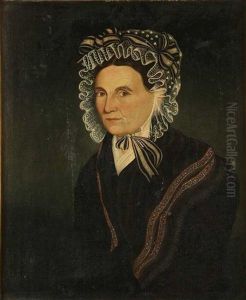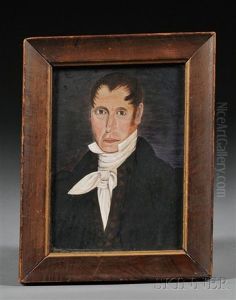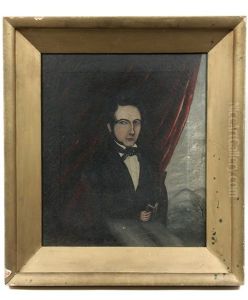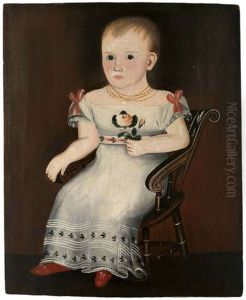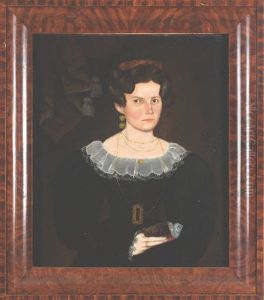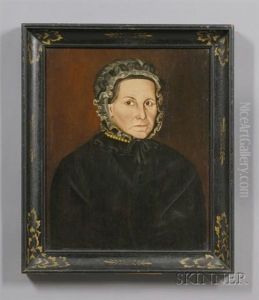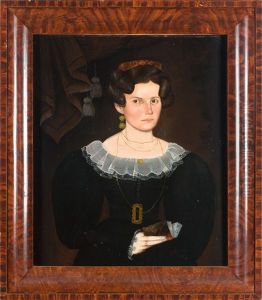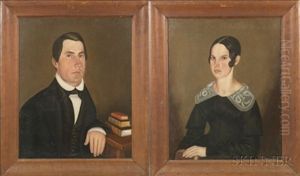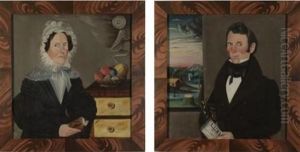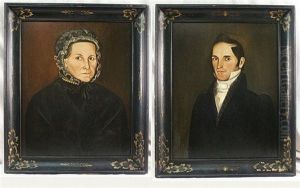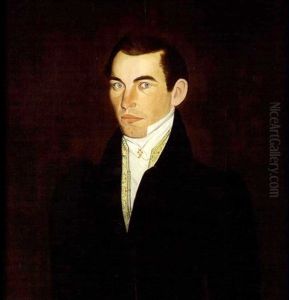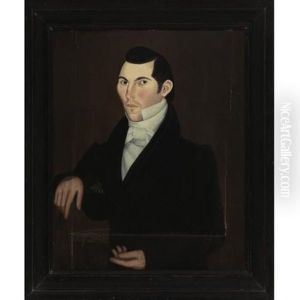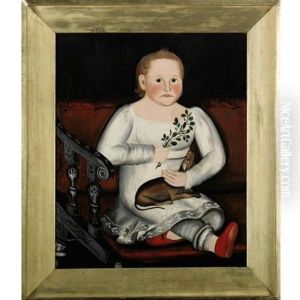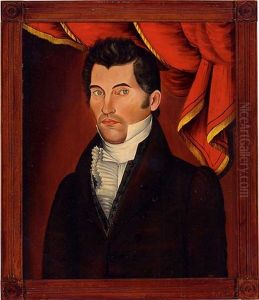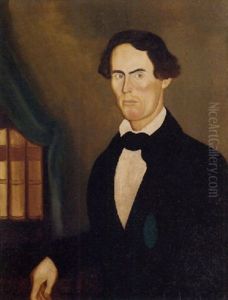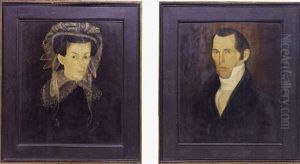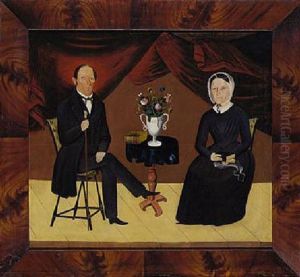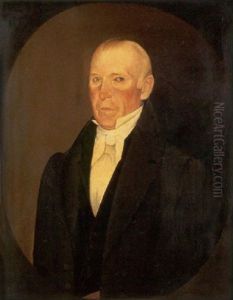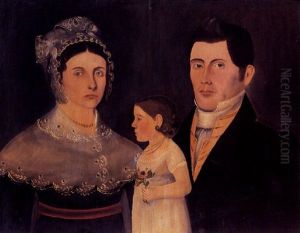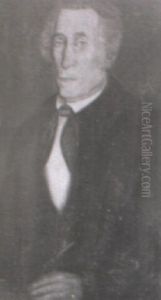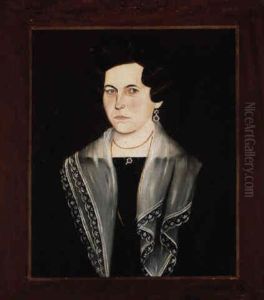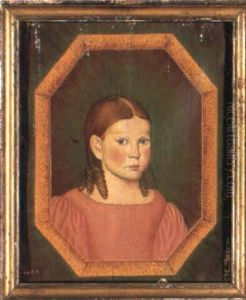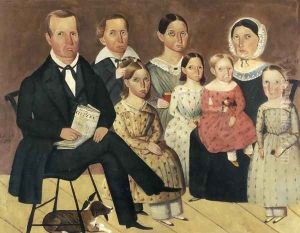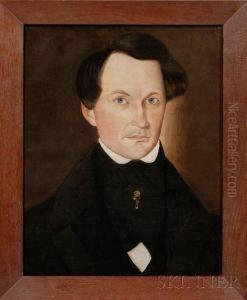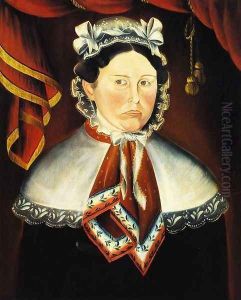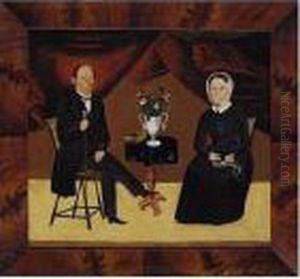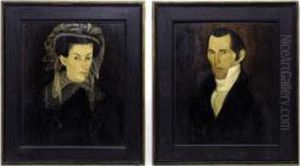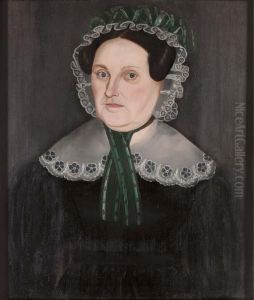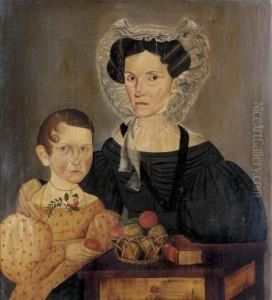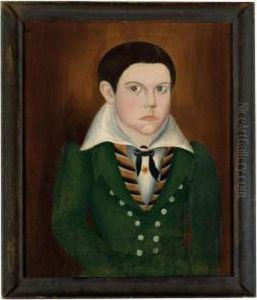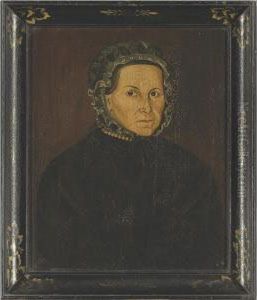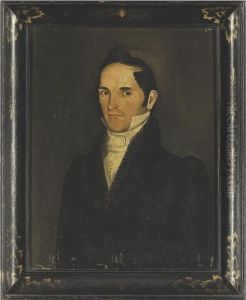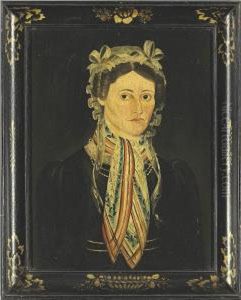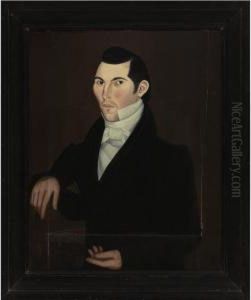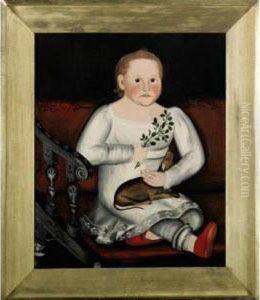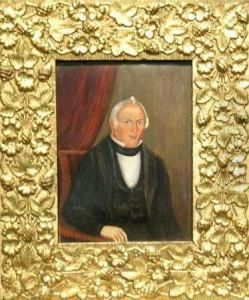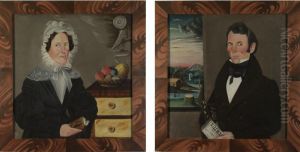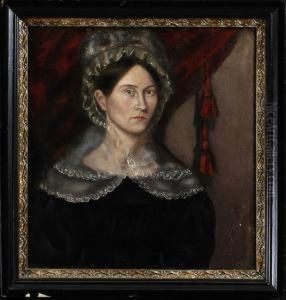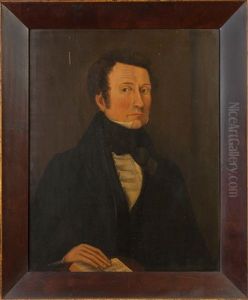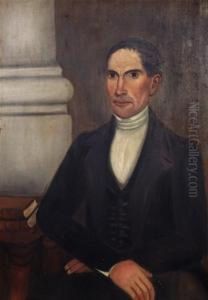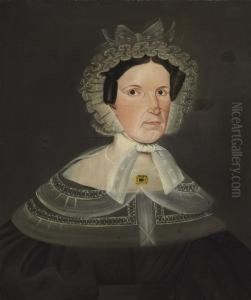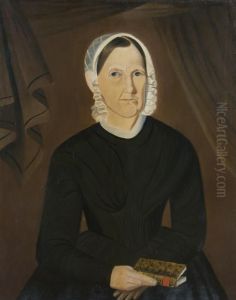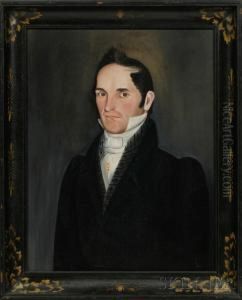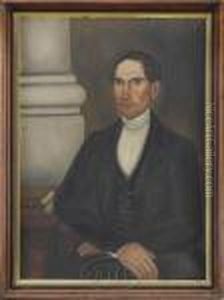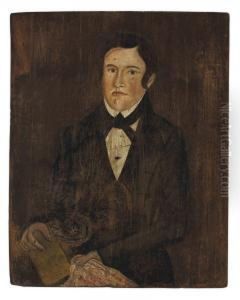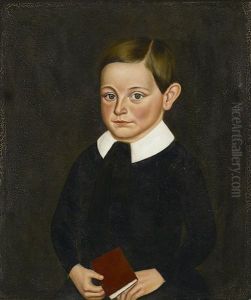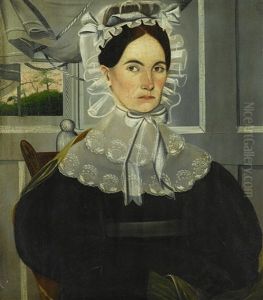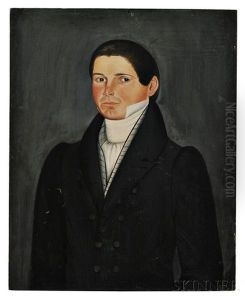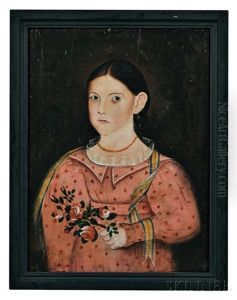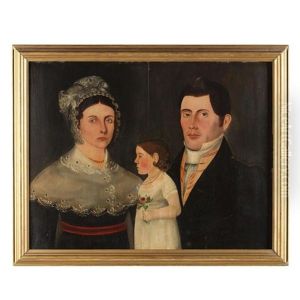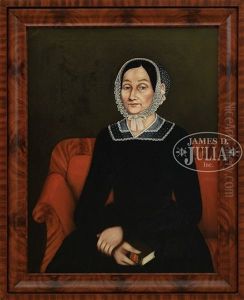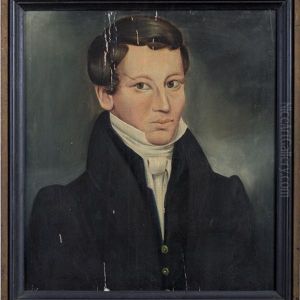Sheldon Peck Paintings
Sheldon Peck was an American folk artist known for his itinerant work as a portrait painter during the 19th century. Born on October 26, 1797 in Cornwall, Vermont, Peck developed his skills as a self-taught artist. His early works were characterized by their simplistic style and reflected the lack of formal artistic training which was common among folk artists of his time.
During the early 1820s, Peck began to travel throughout New England and the Midwest as an itinerant painter, a common practice among folk artists of the era. He painted portraits of local residents, often using a limited palette and emphasizing strong linear features. His works are noted for their distinctive style, which includes large, expressive eyes and a certain rawness in portrayal that conveys the character and personality of his subjects.
In addition to his work as a portraitist, Sheldon Peck was also an ardent abolitionist. He used his home in Lombard, Illinois as a stop on the Underground Railroad, providing shelter to those escaping slavery. This aspect of his life provides a deeper understanding of the man behind the art, reflecting the convergence of his personal convictions with his professional activities.
Peck's itinerant lifestyle and the personalized nature of his art meant that he left behind a scattered collection of works, many of which were only attributed to him after careful study by historians and art experts. His paintings are now considered important pieces of American folk art and are held in various collections, including museums and private holdings. Sheldon Peck's legacy as an artist and abolitionist lives on, offering a window into the cultural and social fabric of the United States during his lifetime.
Sheldon Peck passed away on March 19, 1868, in Lombard, Illinois. Today, his work is recognized for its contribution to the folk art tradition and for its historical value in capturing the likenesses of 19th-century Americans. The Sheldon Peck Homestead, his former home and a documented site of the Underground Railroad, is now a museum dedicated to his life and work.
